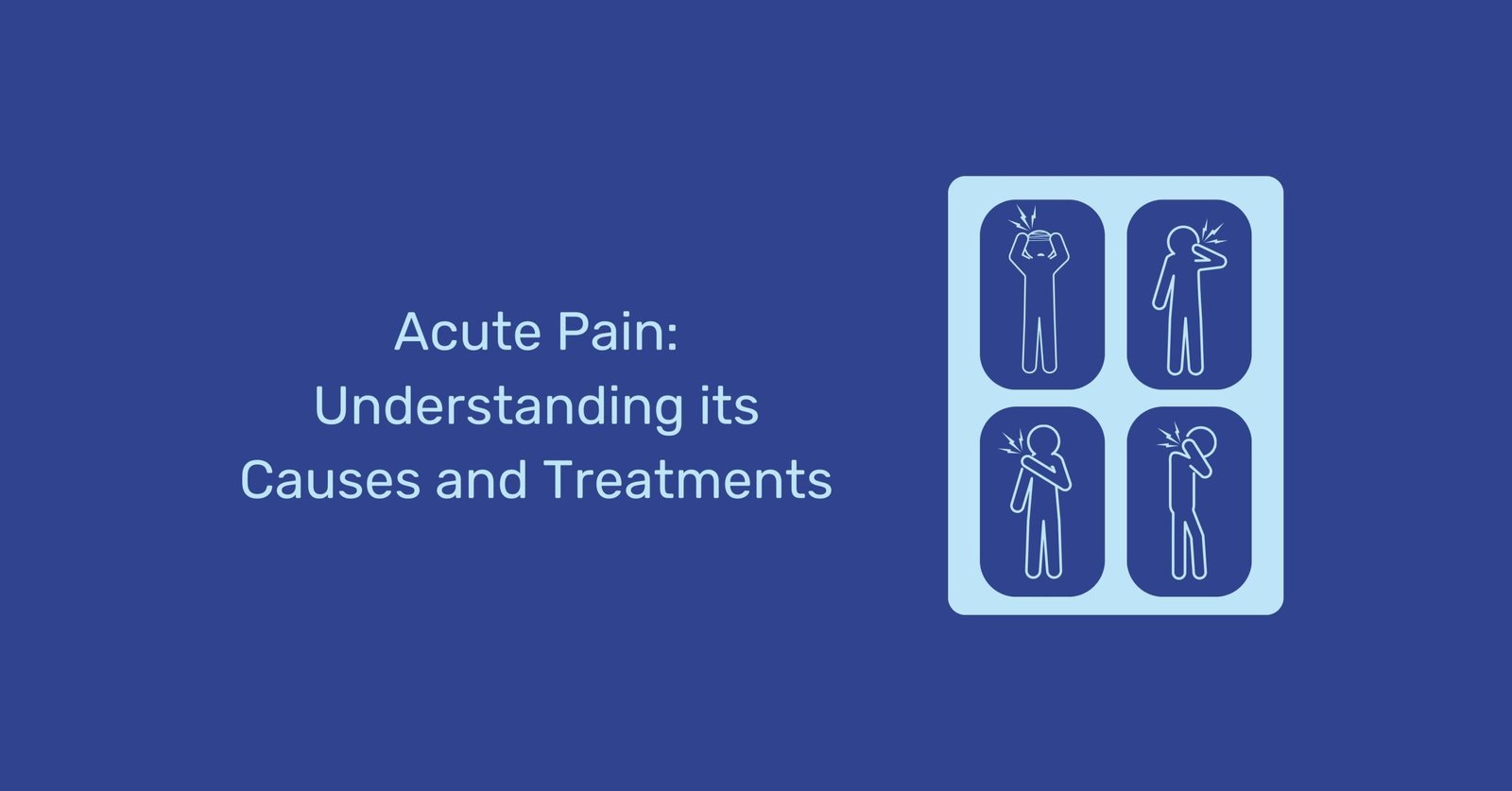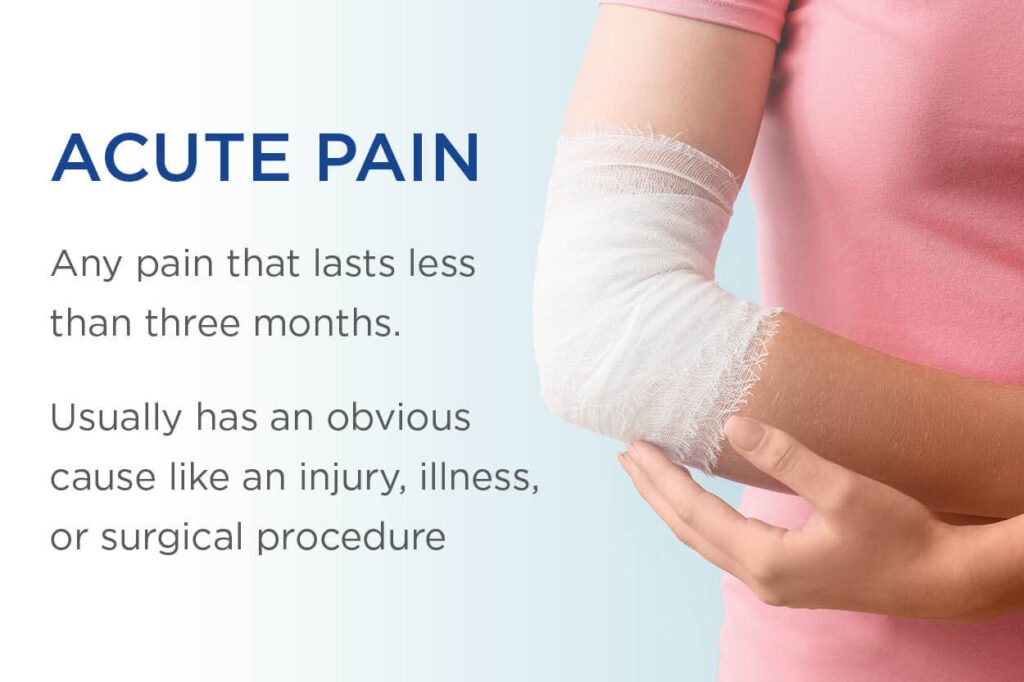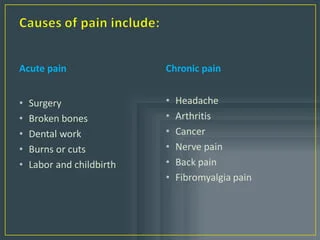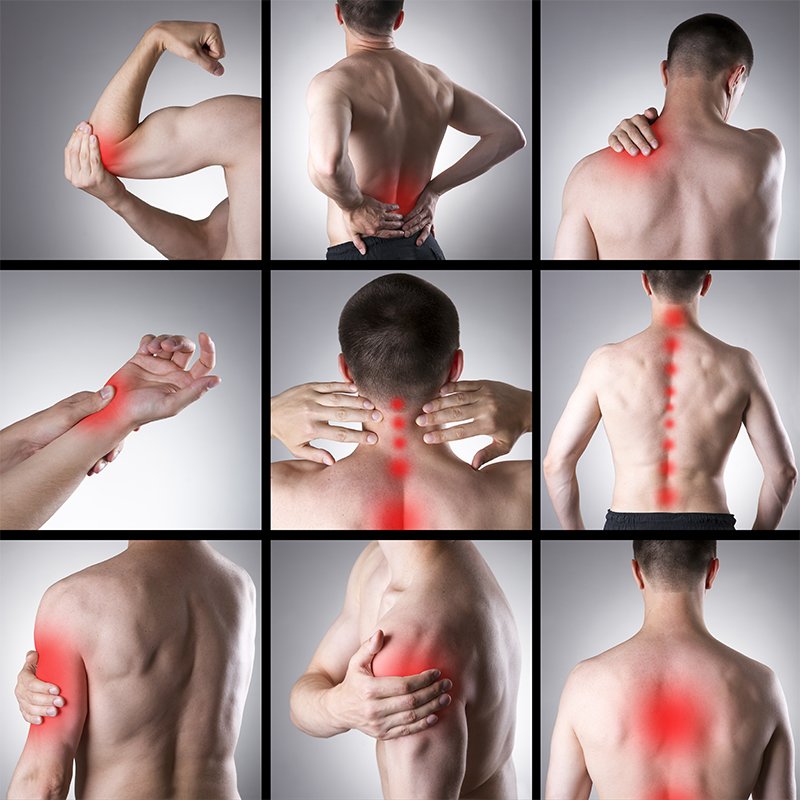
Understanding Acute Pain: Causes, Symptoms, and Treatment Options
Acute Pain Understanding the causes, symptoms, and treatment options

Pain is considered a normal response of the body towards any kind of injury or harmful stimuli. Acute pain is specially beneficial for the body as it acts as a warning sign to alert the body about potential harm and ensuing protective measures. Chronic pain is dissimilar; it lasts for months and even years, whereas acute pain arises all of a sudden and is generally short in nature. However, the causes, symptoms, and treatment options should be known about acute pain to handle it better and promote quick recovery.
Acute pain is defined as a new onset and is commonly the result of an injury or surgery or a medical condition. Such pain usually subsides as the cause of the pain heals; this could be in days or weeks. Acute pain is a very important warning signal that tells your brain that something’s wrong: it’s a cut, a burn, or a broken bone, for example.
Acute pain can be severe and annoying, but it usually is short-lived. Chronic pain is that which lasts longer than after healing should be taking place and sometimes becomes harder to treat over time.
Causes of Acute Pain

Acute pain can stem from anything from an injury or trauma to many others including:
Injuries and Trauma
◾Sprains and strains: overstretching or tearing muscles and tendons.
◾Fractures and broken bones: sudden trauma to the bone caused by accidents or falls.
◾External injuries to the skin and tissues, such as cuts, burns, and bruises.
Surgical Operations
Any form of surgery, be it a small dental extraction or major surgery, can cause acute pain during the healing process after the operation.
Infections
Examples include tooth abscess, appendicitis, and urinary tract infection (UTI). Acute pain is usually localised to the affected area.
Inflammation
Such as gout or acute arthritis, can cause inflammation within the joints, which is accompanied by sudden pain and swelling in the joint.
Headaches and Migraines
Both tension headaches and migraines are common causes of acute pain, which often arise in response to stress, dehydration, or other triggers.
Other Medical Conditions
a variety of medical conditions, such as kidney stones or gallstones, along with injuries, like slipping a disc in your back, can contribute to severe episodes of acute pain.
Symptoms of Acute Pain

Acute pain can have many forms depending on the cause for such pain. However, some of the common symptoms include:
◾Sharply stabbing pain: Often accompanied by pain in the area of injury or inflammation.
◾Throbbing or pulsating pain: This is often caused by swelling or an infection.
◾Localized aching: Acute pain is often focused on one part of the body, perhaps a sprained ankle or a cut on the hand.
◾.Increased sensitivity: The acute pain area might be sensitive to touch, heat, or cold.
◾Swelling, bruising, or redness: Swelling or visibly altered skin may accompany the pain in cases of injury or inflammation.
◾Inability to move or use the affected part of the body: This is common in cases of injury to muscles, joints, or bones.
However, it is important to remember that it can abruptly start and be severe but otherwise improves with healing of the injury or resolution of the condition.
Treatment for Acute Pain
Treatment depends on the severity and source of acute pain. The aim of treatment is pain relief, usually with an intervention to cure the cause. Following are a few treatments to alleviate acute pain.
Rest and Ice:
◾Rest: Avoiding strain or movement of the affected area while it heals can be helpful for acute pain.
◾Ice: Applying a cold compress to an area can help reduce inflammation and numb pain, which is helpful especially after an injury, for 15–20 minutes at a time.
Over-the-Counter (OTC) Pain Relievers:
◾Ibuprofen (Advil), acetaminophen (Tylenol), naproxen (Aleve), tapentadol, tramadol, or oxycodone can help alleviate mild to moderate acute pain by reducing inflammation or blocking pain signals.
◾Topical medications applied directly to the skin include creams or gels containing menthol or lidocaine and other products.
Heat Therapy
◾Applying a heat pack or taking warm baths can relax tight muscles that are causing pain in muscle strains or joint pain.
Physical Therapy and Exercise
◾In musculoskeletal injuries, physical therapy can be suggested to condition the muscles and enhance flexibility, which may avoid further pain episodes.
◾Stretching and gentle exercises could be beneficial for back pain or stiffness neck.
Medications
◾More powerful drugs might be prescribed by doctors to deal with the pain, such as opioids, muscle relaxants, or topical analgesics.
◾Nerve pain medications might be prescribed as a next step when the acute pain is nerve related as in shingles or sciatica.
Alternate Therapies
◾Acupuncture, spinal manipulation/ chiropractic care, massage therapy are ways to administer pain relief to some acute pains, especially musculoskeletal.
◾Mindfulness practice: Deep breaths or meditation can reduce the emotional suffering that usually accompanies acute pain.
Surgery is not necessary, unless indicated by the situation.
In certain cases, surgery may be required to treat the underlying cause of acute pain, such as when there’s a broken bone that needs setting or a tumor causing pressure on a nerve.
When to Seek Medical Help

While acute pain is often manageable with self-care, it’s important to know when to consult a healthcare professional. Seek medical attention if:
1.The pain is severe and unmanageable.
2.Pain is accompanied by other symptoms, such as fever, nausea, or vomiting.
3.There is swelling, bruising, or an inability to move the affected area.
4.The pain persists for more than a few days without improvement.
5.You experience sudden, unexplained pain (such as chest pain or intense abdominal pain).
Conclusion
Acute pain is an unavoidable part of life, often arising from injuries, infections, or medical conditions. While it can be distressing, acute pain serves an important protective function, alerting us to potential harm and promoting healing. By understanding its causes, recognizing symptoms, and using effective treatments, individuals can manage acute pain and recover more quickly.
Acute pain should always be brought to a professional’s attention if it does not improve with basic treatment or, within an appropriate time frame for resolution, persists as chronic pain.
